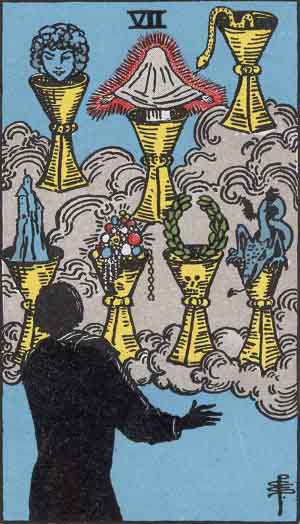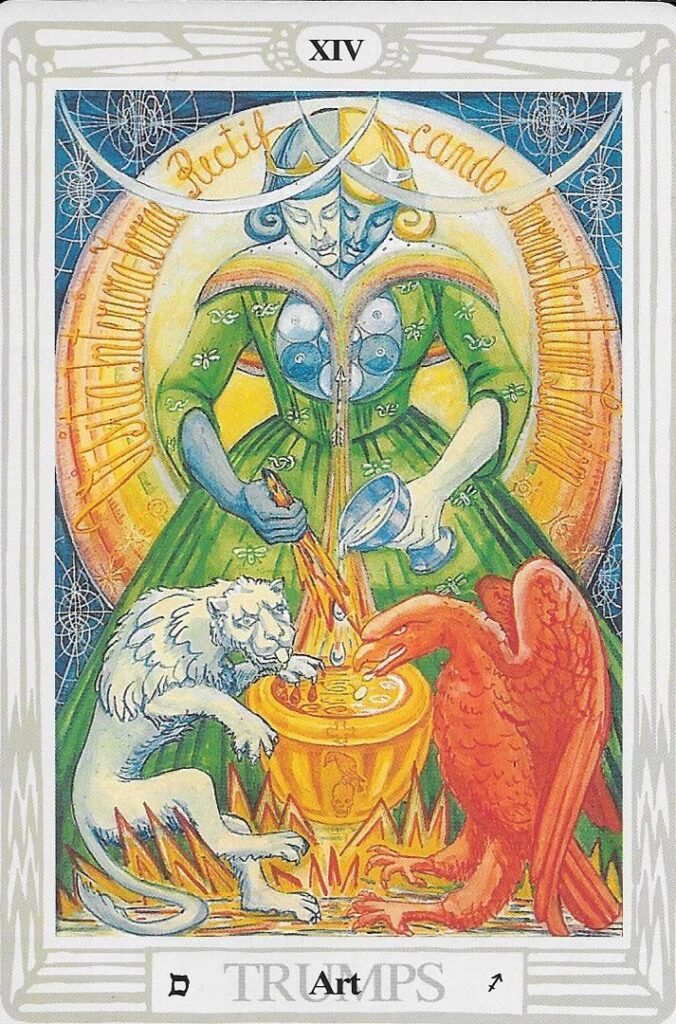Most of us have had some experience with Tarot cards. Whether it was a 15-minute psychic reading, or a transformational session with a specialist, a brief seminar or an in-depth course, most people have some knowledge of what Tarot cards are. For many, it is associated with fortune-telling and predicting the future. But can we use Tarot as a tool for intuitive development?
The origin of Tarot, though ultimately hidden in the history of esoteric arts, goes back to Mamluk playing cards, the Italian tarocchi, which all in turn originate from the Chinese and Indian playing cards. But all of these predecessors of modern Tarot were playing cards. Their use for divination purposes, was a later development. A side gig, if you like.
The first deck of cards created specifically for an occult purpose was the French Etteilla deck of 1789. Etteilla (whose real name was Jean-Baptiste Alliette) was influenced by the French occult school. Some earlier writings of that group claimed that Tarot had an ancient Egyptian origin. With this in mind, Etteilla called his card deck the Book of Thoth. For him, cards were the encoded images of the ancient Book of Thoth, hidden from the uninitiated.
Rather than focus on the specifics of images and symbols used in Tarot, I would like to contemplate the question of why. Why did someone decide they could use playing cards as a tool to predict the future? Or to receive guidance on which path to take? Why do humans throw dice, read the stars, look for clues at he bottom of a coffee cup or in a palm of a hand?
I believe the answer lies in the complex relationship between our conscious and subconscious minds. The information that is available to our conscious mind, something that we can clearly articulate, know and understand, constitutes only a fraction of who we are and what we know. The subconscious is outside our active awareness, and yet it rules our impulses, intuitions, choices and motivations. I see Tarot as a valuable tool to access precisely the realms of the subconscious mind.
Tarot as Key to the Subconscious Mind
How do we practically use Tarot as key to our subconscious mind? And what will it do to develop our intuition?
In my own journey, I had started and given up studying Tarot many times. It felt like an almost insurmountable task. Learning Tarot seemed to mean trying to memorize astrological and numerological references, the meanings behind the glyphs (elements of individual cards), the meanings of the cards themselves, and all the subtle ways the cards influence each other in spreads. And even if I were to somehow learn all of it, each card would still have an endless potential of meanings.
No book could ever teach me how to choose the right one for my situation!
In this approach, Tarot has very little to do with intuition, at least not in the beginning. This is the approach of study, contemplation and years of practice. Without doubt, after many years, intuition would come naturally, just as it comes for a skilled pilot or mechanic, who “feels” that something is wrong without yet consciously knowing what or why. This type of intuition is a product of knowledge and skills integrated into the very fabric of one’s being over many years of practicing the craft.
But is it possible to approach Tarot more playfully? To use it as a trigger to awaken our intuition right from the start?
Tarot and Intuition
Tarot is not an exact science. There are thousands of decks, and thousands of readers, each one of whom has a different approach. The only “learning” you really need to do is how to allow the cards to speak to you personally. To convey a message that is exclusively yours, not anyone else’s, not written in a book on page 208.
To use Tarot as a tool to intuitive development, I suggest a middle path. It is important to learn the basics, such as the basic meanings of cards in the deck you are going to use, as well as some basic spreads. But in order to establish a personal relationship with the cards, you would need to learn how to read their story in images. And the easiest way of doing this is to meditate on the cards themselves, in the same way you would meditate with mandalas or icons and holy pictures.
Tarot speaks in images.
Images have so much to say to our subconscious because they are not exclusive, they do not require and either/or attitude. A shining sun can mean warmth and happiness, but also discomfort. You may see a determined charismatic leader in the Sun card one day, and an invitation to carve out your sanctuary from the world on another. Working with Tarot is a conversation, where you approach the cards as gateways into your inner knowledge, the gatekeepers to the inner teacher who will give you the right answers.
Practical Tips for an Intuitive Tarot Reading
The main key of working with Tarot intuitively, is to rely on your own inner guidance. This is both a prerequisite, and an ultimate goal of using Tarot for intuitive development. You are learning to trust your inner guidance in order to trust your inner guidance even more.
In order to do that, you will need to let go of trying to rely on how others may have interpreted the card. Forget what the deck author says in the booklet. Forget the books that you read (and please don’t try to read any more books! You can of course read to inform yourself, but it has nothing to do with intuition). You are tapping into your own subconscious, not anyone else’s.
Let’s take an example. You want to know what is blocking you from trusting your intuition, why you seem to be stuck without finding answers or being able to make a choice. You decide to only do a 1 card reading to begin with.
The card that you pick is the 7 of Cups in the Rider Waite deck:

- What thoughts, impressions and feelings do you get from this card now? At this very moment?
- How does the card make you feel?
- Who is the subject in the card?
- What is the relationship of the subject with other objects or beings? Try to “jump into” the subject, identify with them, as if seeing the situation through their eyes, impersonating them.
- Do you see a central story that you can tell through the imagery of the card? A theme, or a red thread that goes through the visual narrative?
The way the card speaks to me today, I see someone overwhelmed with a variety of choices. He is looking for illumination, for oneness with the Divine, to receive God, but there are so many options that seem to present themselves as God.
Worldly riches and the laurel wreath of victory speak of distractions, a snake and some kind of lizard seem to be omens of danger and the potential to take the wrong turn, while the castle and the angelic head in cups to the left feel stable but somehow lifeless.
In the center, I see the chalice I am looking for, but the Host is veiled from my eyes, hidden. He is the one I am looking for, but my mind and emotions wander off. I try to do one thing, and then another, never really getting where I want to…
So to answer the original question about blocks to trusting my intuition, I would say it is the distractions of the mind. I know what I want, but I fail to see it clearly, because I try to go after too many things at once. To minimize these distractions, I need to go inward, into the hidden realm, impersonated by the veiled Host, the Being hovering above the chalice in the center. I need to meditate and work on clearing the mind, gradually simplifying my life and avoiding too much information and too many choices.
Let’s take another example. Let’s imagine you asked the same question but used a different deck, Thoth Tarot by Crowley/Harris. And you pick Key 14, Art:

That is certainly an interesting card to pick! If you go over the same questions and prompts we used in the previous reading, how does this card make you feel? Can you identify with the main protagonist? Jump into their skin? What does it feel like, being them? What do they say to you? What is she/he doing (here the figure is both male and female)? What story is the card is telling you?
In my own reading today, I see alchemical transmutation. Because Thoth tarot cards are also portals, the card gives both the answer and the healing energy to clear the blocks I can identify. The card speaks to me of duality, of resistance to recognize that what I see as separate are parts of the whole. The cards tells me that my excessive judgement of what is good and what is bad blocks intuition.
The writing in Latin above the figure says, visit the inner parts of the earth, and by refining, you will find the hidden stone. In reality, there is no separation. I need to go within, go into my inner basements, and it is there, in the darkness, that I find my treasure. I need to accept all parts of me and my experience — and let them go, put them all into the cauldron. For something new to emerge I have to accept and then release the old, without holding on to any preconceived notions.
What does the card say to you today?
I encourage you to try and work with Tarot if you feel stuck or if you feel your intuition needs improvement. For this purpose, I recommend to start with either of the two decks I used in the examples above, Thoth and Rider-Waite. Rider-Waite is the easier deck to work with because of the images used throughout. Thoth will likely speak to you if you identify with being an advanced soul and have always had an interest for the occult and the esoteric.
